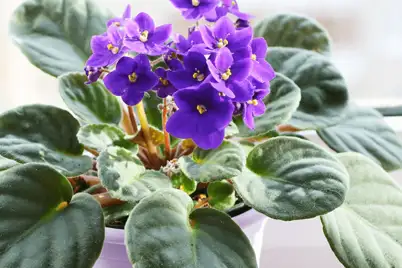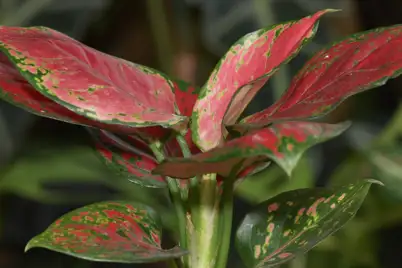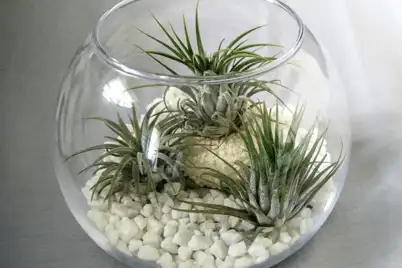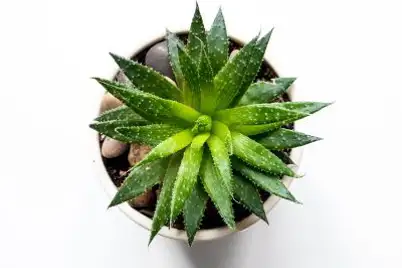-
Most bromeliads are classed as epiphytes, meaning that they can easily grow on trees, rocks or cliff faces.
-
Most bromeliads absorb most of their water and nutrients through their leaves or by storing water in their central rosette.
-
Some bromeliads are terrestrial species or ground dwellers, these include Cryptanthus spp. and the well-known pineapple (Ananas comosus)
-
Bromeliads thrive in humid conditions and do well under large canopy trees or sheltered positions.
-
They are a great plant choice for Kokedama projects due to their epiphytic nature.
-
Once a plant has flowered it will not produce any further flowers in its lifetime. It will produce 'pups' (small bromeliads) that can be separated from the mother plant when they are large enough.
-
There are many different genera or groups of Bromeliads. The most well known of these include:
-
Giant Bromeliad (Alcantarea spp.)
The most well-known species is the A.imperialis 'Rubra' due to its striking green leaves with shiny red/purple undersides. This species can grow to at least 1.2 metres in height and have a width of around 1.5 metres. To add to this grand appearance, when the flower spike does make an appearance it can reach to a whopping 3 metres! This species is a great designer plant and a real talking point in the garden.
Many of the Bromeliads that you see belong to this group. There are many different varieties and species, most of which prefer milder winters and frost free areas. The maximum height varies on the species and can range from 15cm to 2 metres. When in flower during late summer to winter their stems sit high above the foliage adding to their appeal.
This species is available in many different colours including green, burgundy, silver, streaked, banded, variegated or spotted. In addition flowers spikes come in a wide range of colours including, but certainly not limited to, red, yellow, pink, orange, blue and purple.
The most popular varieties include:
-
A. fasciata – Silvery foliage, pink bracts with small blue flowers.
-
A. chantinii – Dark green to near black foliage some banded in white, red and yellow flowers.
-
A. weilbachii – Bright green foliage with pink to purple flowers.
The tastiest of all Bromeliads. This species loves the humid warm climates and will take some patience as the fruit is slow to mature.
For an easy to grow Bromeliad you can't go past the Billbergia spp. These hardy spiny leafed plants are very adaptable and can handle being in the soil and part sunny positions (avoiding the harsh afternoon sun). This is a great choice for a Bromeliad beginner!
The most popular varieties include:
-
B. nutans – Small blue and green flowers with vibrant pink bracts that sit atop narrow grey-green leaves
-
B. pyrmidalis – Light green leaves with bright orange pyramid bracts that lead to smaller red flowers that produce violet tips.
-
B. zebrina – Dark spotted prickly dark leaves with bright pink bracts with small green/yellow flowers.
Cryptanthus spp.
This ground-dwelling group draw most of their nutrients from the roots and the soil. They love humid environments and frost-free conditions. Leaf colours range from orange, pink to green with some varieties having variegated or spotted forms.
Widely grown for its stunning rosettes of plain, glossy green and pink or gold leaves. These can be variegated or pattered in contrasting colours.
The most popular varieties include:
-
G. sanguina - Shiny green rosettes, that can have variegated or spotted leaves. The flowers are small and low in the centre of the plant
-
G. lingulata – Narrow green leaves with red bracts and white flowers.
Grown mainly for their different foliage than their flowers, this species is great to grow in mass plantings. N. carolinae is the most commonly grown variety due to its colour changing heart right before flowering.
Puyas are more cold tolerant than most other Bromeliads. P. berteroniana is the most commonly known species. It forms a spiny plant that reaches up to 1 metre in height and produces a tall stem of metallic blue-green flowers in summer.
Great for growing indoors or in filtered light conditions. They take their nutrients and water from the air.
This species can be grown indoors or outside and is also a great choice for the Bromeliad beginner. The most common species available is V. hieroglyphica which has large broad leaves that can reach a height and width of a massive 1 metre! The main feature of this variety are the squiggles that appear in the leaves creating a unique feature for the garden.






